Viewing: Blog Posts Tagged with: Pencil Sketching, Most Recent at Top [Help]
Results 1 - 25 of 133
Blog: Gurney Journey (Login to Add to MyJacketFlap)
JacketFlap tags: Pencil Sketching, Add a tag
Blog: Gurney Journey (Login to Add to MyJacketFlap)
JacketFlap tags: Pencil Sketching, Add a tag
Gustavo Torqueto asks: “How do you draw someone that is in constant movement?”
The amount that musicians move around varies a lot, depending on the style of the performer and the kind of instrument. A few are reliably rock-steady—Irish flutists, for example, especially if they are playing into a microphone. They tend not to budge, so you can settle into a careful drawing.
It’s a good idea to watch any performer for the first few minutes to observe the range of poses they’re likely to take, and to let them settle in. If the subject is going to move a lot, such as this symphonic conductor, I start a series of smaller sketches, each one representing a keyframe or characteristic pose that they cycle back into. I lock a pose in my short term memory by snapping my eyes shut and studying the afterimage.
-----
International Artist magazine issue 107
Blog: Gurney Journey (Login to Add to MyJacketFlap)
JacketFlap tags: Portraits, Pencil Sketching, Add a tag
Blog: Gurney Journey (Login to Add to MyJacketFlap)
JacketFlap tags: Pencil Sketching, Academic Painters, Add a tag
Today marks the 200th anniversary of the birth of the German artist Adolph Menzel.
His personal motto was “Nulla dies sine linea” (”Not a day without a line”). He drew ambidextrously, alternating between the left and the right, sometimes on the same drawing. If he was ever caught without drawing paper, he sketched on whatever was available, even a formal invitation to a court ball. Whenever he was spotted at a social event, the whispered word went abroad that “Menzel is lurking about.”
If you do a sketch today, do it in honor of Mr. Menzel. It's always good to have his ghost on your side.
Blog: Gurney Journey (Login to Add to MyJacketFlap)
JacketFlap tags: Pencil Sketching, Add a tag
Blog: Gurney Journey (Login to Add to MyJacketFlap)
JacketFlap tags: Pencil Sketching, Add a tag
 |
| Study of fallen white birch, pencil, James Gurney |
Blog: Gurney Journey (Login to Add to MyJacketFlap)
JacketFlap tags: Pencil Sketching, Academic Painters, Add a tag
The Finnish National Art Gallery has released online the sketchbooks of Albert Edelfelt (1854-1905).
 |
| Albert Edelfelt, Boys Playing on the Shore, courtesy Google Art Project |
Blog: Gurney Journey (Login to Add to MyJacketFlap)
JacketFlap tags: Video, Animals, Watercolor Painting, Pencil Sketching, Add a tag
The DVD of "Tyrannosaurs: Behind the Art" is now retail ready.
The DVD version has the 40-minute production about the making of the paintings I did for Scientific American. But it also has a slide show and a special 13-minute bonus feature, where I pose the question: "What can we learn about dinosaurs by sketching a chicken?" The abbreviated YouTube video above gives you a sample of that feature. (Link to YouTube)
• Differences between chickens and theropods
• Feathers on dinosaurs in Dinotopia
• Function of feathers in chickens
• What's the purpose of the comb and wattles?
• More chicken sketches
• Feather groupings on a bird's body
• Can we make a dinosaur from chicken DNA? Should we?
• How are bird tails different in ground-loving birds?
The list price of the 53-minute DVD (NTSC, Region 1) is just $24.50. You can preorder it on Amazon, where it officially releases on June 22. But for the next two weeks only, GurneyJourney readers can order the DVD direct from the manufacturer at Kunaki for a 10% discount sale price of $22.00.
Blog: Gurney Journey (Login to Add to MyJacketFlap)
JacketFlap tags: Animals, Pencil Sketching, Add a tag
Here's a pencil sketch from more than 10 years ago, when we had a kitten named Sunlight, and she always loved to curl up in an empty box.
Blog: Gurney Journey (Login to Add to MyJacketFlap)
JacketFlap tags: Portraits, Pencil Sketching, Figure Drawing, Add a tag
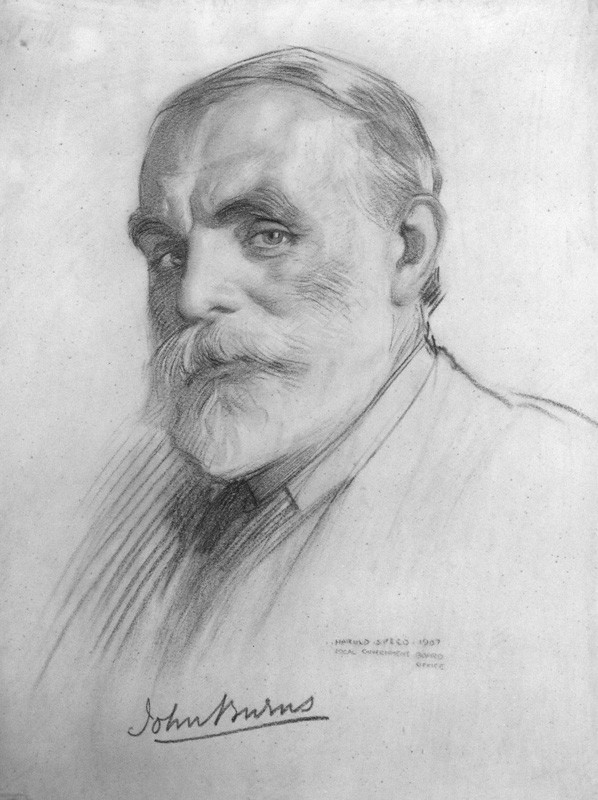 |
| John Elliott Burns by Harold Speed, 1907 |
Today we continue with the GJ Book Club. Together, we're studying Harold Speed's classic The Practice and Science of Drawing.
The following numbered paragraphs cite key points in italics, followed by a brief remark of my own. Your thoughts are most welcome in the comment section of this blog. If you would like to respond to a specific point, please precede your comment by the corresponding number.
1. The expression of form upon a plane surface.
2. Apelles
4. Colour would seem to depend much more on a natural sense and to be less amenable to teaching.
As an author of a book about color
5. To express form one must first be moved by it. There is in the appearance of all objects, animate and inanimate, what has been called an emotional significance, a hidden rhythm that is not caught by the accurate, painstaking, but cold artist.
Speed's definition of rhythm recognizes how emotion drives artistic choices. Rhythm therefore is not merely a design principle.
These choices, so central to a successful work, usually happen unconsciously, driven by the emotion the artist feels at the outset. The challenge is hanging onto that guiding feeling in the labor of making the picture.
7. Fine things seem only to be seen in flashes.
In my experience, I find this to be true not only of the process of drawing, but in my creative life more generally. In the fields of character development, scriptwriting, and world-building, the deeper inspirations come unexpectedly in torrents, separated by periods of steady craftsmanship.
 9. One is always profoundly impressed by the expression of a sense of bulk, vastness, or mass in form.
9. One is always profoundly impressed by the expression of a sense of bulk, vastness, or mass in form. Later he talks about lightness. It's always good to think about gravity when drawing. Muscles are always pulling against gravity. Wings struggle to lift a bird through the air against the pull of the earth. Drawing someone off-balance generates interest, but balance and imbalance are factors of gravity.
10. In these school studies feeling need not be considered, but only a cold accuracy....These academic drawings, too, should be as highly finished as hard application can make them, so that the habit of minute visual expression may be acquired.
11. Drawing, then, to be worthy of the name, must be more than what is called accurate.
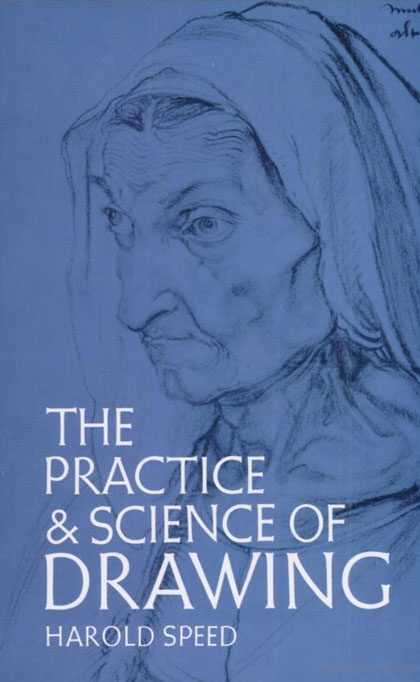 |
| Harold Speed (Dover ed.) |
The Practice and Science of Drawing is available in various formats:
1. Inexpensive softcover edition from Dover,
2. Fully illustrated and formatted for Kindle.
3. Free online Archive.org edition.
4. Project Gutenberg version
Articles on Harold Speed in the Studio Magazine The Studio, Volume 15, "The Work of Harold Speed" by A. L. Baldry. (XV. No. 69. — December, 1898.) page 151.
and The Windsor Magazine, Volume 25, "The Art of Mr. Harold Speed" by Austin Chester, page 335. (thanks, अर्जुन)
------
GJ Book Club Facebook page (Thanks, Keita Hopkinson)
Pinterest (Thanks, Carolyn Kasper)
Original blog post Announcing the GJ Book Club
Blog: Gurney Journey (Login to Add to MyJacketFlap)
JacketFlap tags: Pencil Sketching, Portraits, Add a tag
In March of 1956, Harvey Dinnerstein and his friend Burton Silverman traveled to Montgomery, Alabama to sketch the civil rights movement that was happening in the African-American community.
 |
| Rev. M.L. King, by Burton Silverman, 1956 |
 |
| Drawings from the Montgomery Protests by Harvey Dinnerstein and Burton Silverman, 1956 |
 |
| Drawing by Harvey Dinnerstein |
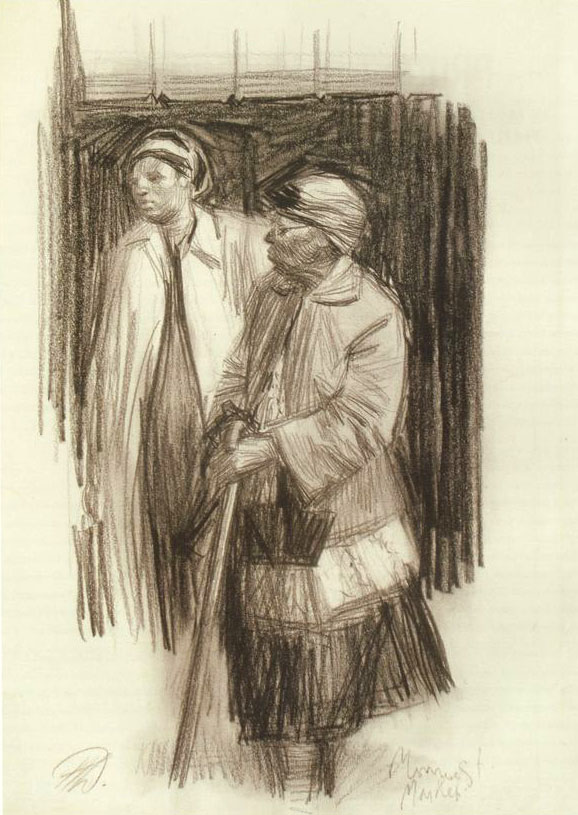 |
| Monroe Street Market by Harvey Dinnerstein |
The drawings were published in newspapers, magazines, and print portfolios. Some were given to museums. In 2004 the Delaware Art Museum presented 38 of the drawings in the exhibition "Glorious Dignity: 45 Drawings of the Montgomery Bus Boycott," followed by a 50th anniversary exhibition at the Montgomery Museum of Art.
------
The quotes are from Painting People
Burton Silverman's website
Harvey Dinnerstein on Wikipedia
Blog: Gurney Journey (Login to Add to MyJacketFlap)
JacketFlap tags: Animals, Pencil Sketching, Add a tag

The drawing is in a Pentalic
Blog: Gurney Journey (Login to Add to MyJacketFlap)
JacketFlap tags: Animals, Pencil Sketching, Add a tag
Blog: Gurney Journey (Login to Add to MyJacketFlap)
JacketFlap tags: Portraits, Photography, Pencil Sketching, Add a tag
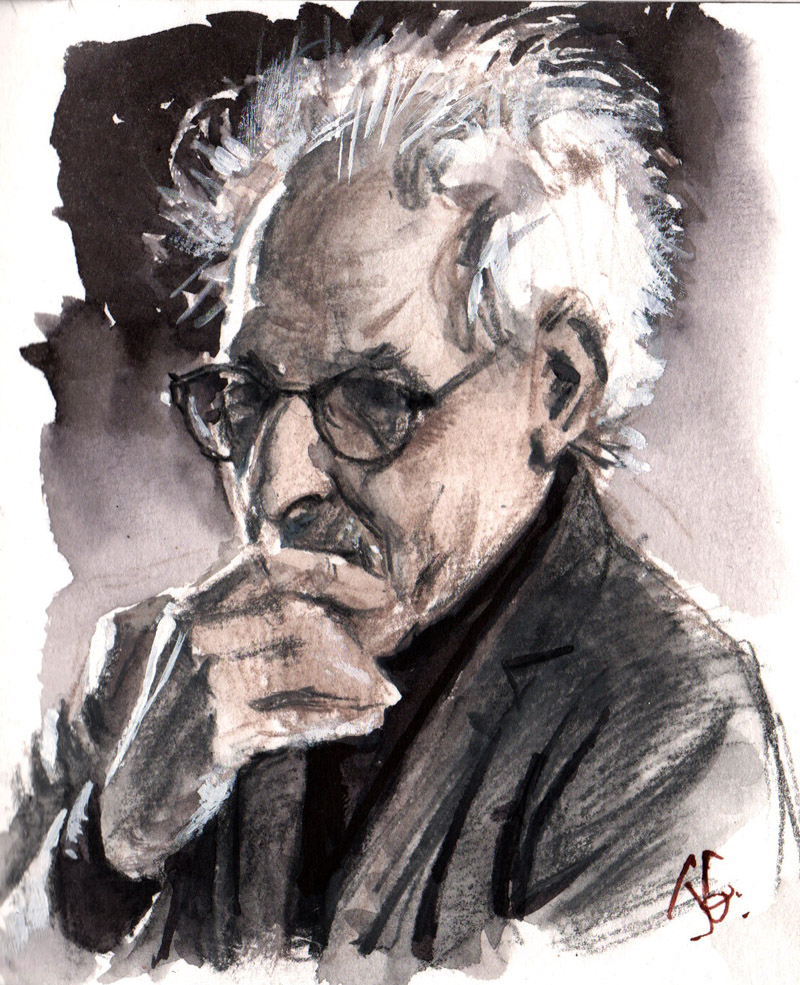 |
| Portrait of Stephen Shore, photographer, drawn from life by James Gurney |
"When I started this work, no art photography was in color. Paul Strand told me, 'Higher emotions couldn't be communicated in color.' Mind boggling! What would Kandinsky think of that? I see the world in color. It's what it's like to see. Color gives cultural information. By 1990 almost all art photography was in color. Then in contrariness I started working in black and white."
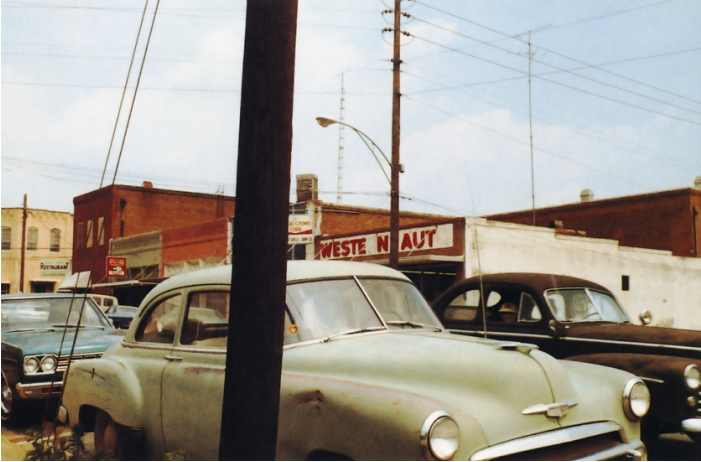 |
Stephen Shore, Columbia South Carolina June 1972 |
-----
Stephen Shore's website. Photos ©Stephen Shore
Recommended books:
Stephen Shore: Survey
Stephen Shore: Uncommon Places
Blog: Gurney Journey (Login to Add to MyJacketFlap)
JacketFlap tags: Pencil Sketching, Add a tag
| James Bagwell, conductor, Bard College Symphonic Chorus |
Then he flew into action. As he lifted his arms in precisely measured movements, his fitted jacket reflected the pull of his shoulders. When the chorus declared "Pour our vengeance on our foes," he leapt up in great animation, the tails of his coat lifting up like the flounces of a lady's skirt.
I sketched from the third row, using water-soluble colored pencils and a black and a clear-water brush pen. To record these faster motions I had to blink my eyes shut and try to hold the poses in short-term memory.
---
Previously on GurneyJourney:
Maestro Bagwell
James Bagwell at a Rehearsal
Previous posts on concert sketching:
The "Flash-Glance" Method
Gouache portrait of an Irish whistle player
Sketching a vocal concert
Violinist in ink wash
Horn Player
Mirko Listening
Club Passim Gig
Shapewelding Sketching
The Cello and the Pencil
Concertgoer
Mass in C
Handel's Messiah
Blog: Gurney Journey (Login to Add to MyJacketFlap)
JacketFlap tags: Portraits, Pencil Sketching, Add a tag
Today we'll be fondly remembering Joe Fusillo, one of my uncles on Jeanette's side, who passed away earlier this week. I knew him as a fun-loving, larger-than-life person who organized the kids' games at family parties and he always had everybody laughing.
He was a great builder and restorer, and always had ambitious projects in the works. I did this sketch at a family party a while ago, and I remember that even when his hair was white, his eyebrows were always dramatic and dark.
Blog: Gurney Journey (Login to Add to MyJacketFlap)
JacketFlap tags: Pencil Sketching, Comics/Cartooning, Models Posing, Add a tag
Every Thursday night in Los Angeles, a group of artists gets together to draw from the model, but this is no ordinary sketch group.
 |
| Characters by Mike Swofford from The Drawing Club |
The Thursday night sessions are mostly short poses ranging from 5 minutes to a half hour, and they have long poses on Sundays.
For example, here's Steve Jacobsen modeling as The Chef.
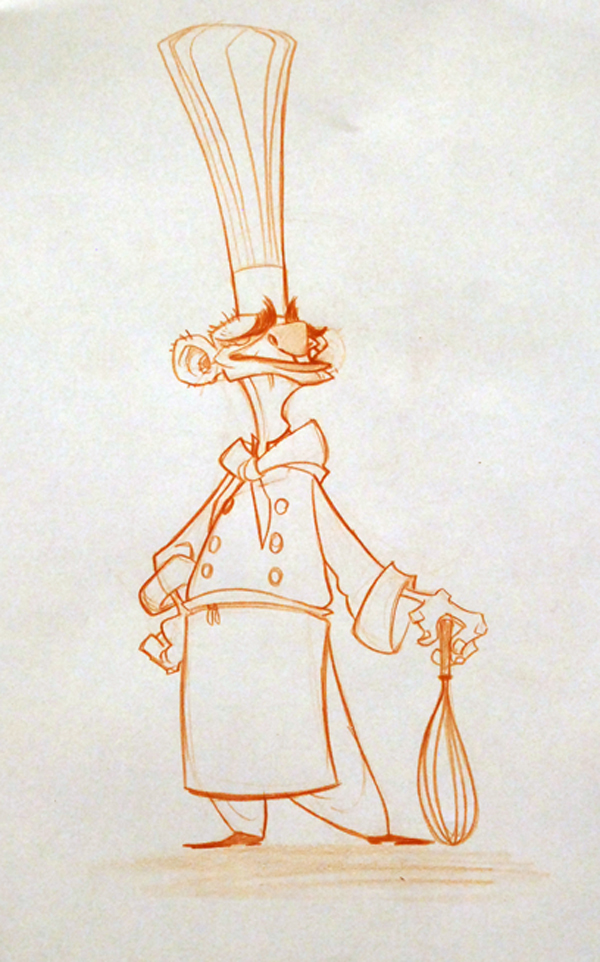 |
| "The Chef" by Brett Bean from The Drawing Club |
The Drawing Club is not a class; it's more of an open workshop. Anyone who pays the $20.00 entry fee can attend, and the regulars include a lot of master animators and character designers from Walt Disney Feature Animation or DreamWorks Animation who are looking to brush up on their drawing skills. There are also plenty of students, and a spirit of experimentation.
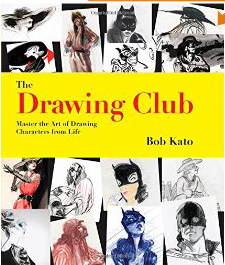
Bob Kato recently released a book of some of the work that has come out of the Drawing Club. The 9x9 inch softcover edition is 144 pages long, and is lavishly illustrated with examples from 66 different artists.
The text by Mr. Kato is full of encouraging tips for going beyond what you're actually observing from the live model. He suggests a variety of media: pencil, markers, brush-and-ink, watercolor, and digital.
Mr. Kato explains how each artist approaches the challenge differently depending on the kind of work they do.
"Story artists like models to do quick, daring poses because they're looking for gestural movement as it relates to storytelling. Their sense of design is heavily invested in the communication of the moment, rather than what media looks best....The character artists, on the other hand, are always looking at the model like a raw ingredient that will be turned into their own version of the character. When the model shows up in costume and starts posing, they look at the shapes made by the costume and character and get to work redesigning...to make the character funnier, scarier, happier, or sadder. They take the pieces apart—a gangster's hat, tie, overcoat, drooping cigarette, and gun—and create their own version."
Book: The Drawing Club: Master the Art of Drawing Characters from Life
Website: The Drawing Club
Blog: Gurney Journey (Login to Add to MyJacketFlap)
JacketFlap tags: Pen and Ink, Pencil Sketching, Book reviews, Add a tag

Richard Scott's new book, "Sketching - from Square One to Trafalgar Square" is a comprehensive introduction to drawing from observation.

The book presents practical advice for achieving accuracy, including measuring angles and organizing value shapes. One tip is that you can size up an appropriate cone of vision by holding your arms out at the width of your shoulders in front of you.
Scott includes a variety of excellent examples of sketch techniques, including pen and ink, marker, pencil, and wash drawing, all in black and white.
He discusses not only linear perspective, but also the simplification of a subject into tonal shapes, with fresh ideas that will appeal to painters, too. He acknowledges not only objective features of the scene, but also subjective aspects of visual perception, such as how certain edges go in and out of focus when you squint.
Scott's background is in architectural rendering, so he approaches subjects from the built environment with particular authority.
Although his approach is clear and analytical, it's not just technical. He has an artist's eye throughout. One of the inspiring qualities of the book is the focus on conveying feeling, and the emphasis on digging into why a subject appeals to you in the first place and how to play up that emotional quality.
The book lays out useful methods that anyone can use to see better, think better, and draw better. The result is a practical drawing manual that is a worthy successor of classic sketching books by Betty Edwards and Arthur Guptill, one that will improve the drawing skills of the beginner and master sketcher alike.
-----
Details: 192 pages, 8" x 10" (horizontal format), softcover (with covers that are a bit too thin, unfortunately). The book is organized into three parts, with 10 chapters and 419 illustrations. It is priced at $29.95.-----
Available on Amazon: Sketching - from Square One to Trafalgar Square
Official website: Sketching from Square One
Blog: Gurney Journey (Login to Add to MyJacketFlap)
JacketFlap tags: Portraits, Pencil Sketching, Add a tag
Portrait sketch of Sir John Seerey-Lester, fellow instructor at the SKB Workshop in Dubois, Wyoming.
Blog: Gurney Journey (Login to Add to MyJacketFlap)
JacketFlap tags: Watercolor Painting, Pencil Sketching, Add a tag
During this "Watercolor Week," I thought I would share just two of the 5-minute demo segments (Tortoise and Zouave) from the new watercolor video "Watercolor in the Wild." If you have purchased the DVD or download, thanks!—and don't worry: I'll hold back the four remaining longer segments (Miniature Horse, Carriage House, Greenhouse, and Churchyard)—which actually translates to more than 3/4 of the running time that you can see only if you purchase the video.
Sharing these sample clips on the blog gives me a chance to amplify them with closeups, and it gives everyone an opportunity to comment and ask questions so that these blog posts can be more interactive.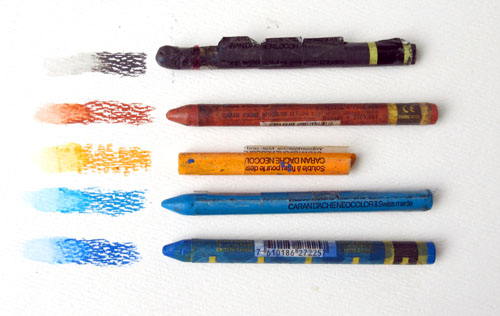
For example, yesterday in the comments after the art supply list, Irene mentioned that you can get woodless watercolor pigment sticks or crayons, something I didn't discuss in the video. Thanks, Irene. As she indicated, Derwent makes Aquatone Woodless Pencils, which are like pencils made of solid pigment, and square pigment sticks called Derwent Inktense Blocks
. Caran d'Ache
makes round water-soluble pigment sticks called Neocolor Pastels
(shown above)
These are shorter than the colored pencils and a bit softer, like crayons. Lyra's have a bit more the feel of wax crayons. But they're all a good value because you get a lot of pigment for the price, and although I didn't use them on this drawing, I do use them occasionally for creating rough textures.
Whether you use the wood pencil or the crayon version of these water-soluble drawing tools, they offer three big advantages over a pure watercolor rendering.
First off, they're a fast way to get texture. I used the colored pencil dry over the first base layer of watercolor.
Secondly, as you can see in the little round scales above, you can add water later to soften or blend the pencil. That's how I made those smooth dots: just a touch of water on each. And I used the water brush to group them together into a shadow, as along the right side of the form.

The camera extension bar has a wooden wedge on the side that fits the quick release slot of my tripod.
To learn more about the 72-minute video "Watercolor in the Wild":
HD download: (Credit Card)
HD download: (Paypal) buy
DVD: (NTSC, Region 1)
Blog: Gurney Journey (Login to Add to MyJacketFlap)
JacketFlap tags: Watercolor Painting, Pencil Sketching, Painting Gear, Add a tag
(Link to video excerpt)
Here's a complete list of materials and a buyer's guide for plein-air watercolor painting.
This is a supplement to my instructional video "Watercolor in the Wild."
• The Global Art Materials Watercolor Book (5-1/4 by 8-1/4 inch)
• The Stillman and Birn Beta Hardbound Sketchbook (5.5 x 8.5 inches)
• The Pentalic Watercolor Field Book (7 x 10 inches)
To decorate the cover, I use the oil-based One-Shot Sign Painter's Lettering Enamel
Custom Sets Made from Empty Pans
You can get exactly the colors you want by buying an empty metal box and filling it with colors that you choose. When the colors run low, you can refill the pans with tube colors.
Large size empty box. In my videos, I'm using an old Talens box from the 1960s. You can get a similar large empty metal watercolor box, which holds 24 half pan colors or 12 full pans. This box opens up to 9 x 8 x 1 inches. You can combine half pans and full pans in the same box, using full pans for colors you use more often. Sometimes I put in two pans of the same color if I use them a lot.
Small size empty box (left). The smaller empty metal watercolor box
If you're looking for a super-compact pocket rig, or if you're a student, a first-timer, or on a budget, I recommend the Winsor and Newton pocket watercolor set with 12 colors
Brushes
Here's a good inexpensive starter set of brushes: Richeson Sable Hair Watercolor Brush Set/5
I like sable flat brushes, such as:
1/2-Inch Sable Brush
3/4-Inch Sable Brush
I also use a 1/4-Inch Synthetic Watercolor Flat Brush
For laying bigger washes and wetting the paper, a Cat's Tongue Wash Brush is a good tool. It has a flattened ferrule similar to a filbert brush.
Winsor and Newton Series 7
Richeson Siberian Kolinsky brushes
Escoda Optimo Kolinsky
Da Vinci Maestro Series Kolinsky Red
If you have a very compact kit and can't carry a box of brushes, you might want to use a Sable Round Travel Brush
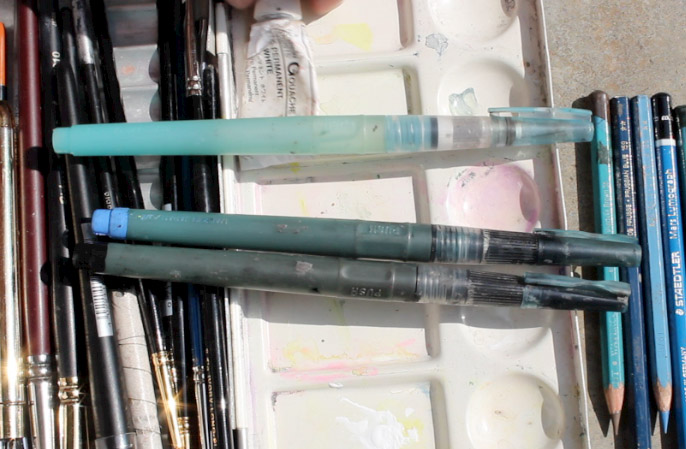
Water Brushes
I always try to carry four Niji Water Brushes with large round tips
I also carry a tube of
Here's a 2-Inch Plastic Clamp
These add a lot of options and variations to traditional watercolors. I recommend trying a few test pencils from several different brands to see which ones you like. My favorite brand is Caran D'ache Supracolor
I started with a Caran d'Ache Supracolor Set of 18
Caran d'Ache Supracolor watercolor pencils
#001 White
Pencil Box
The pencil box I use was customized by armorer Tony Swatton. It began as a metal box I bought at a Japanese bookstore called Kinokuniya in Los Angeles. (I painted the Apple logo as a gag.)
Tony then added the hammered brass piece with rivets and I aged it with paint.
I use a Velbon CX-444 Tripod
Three legged stool
A Tripod Stool
Sketchbook Pochade
The simplest sketchbook holder is a piece of 1/4 inch or 5/16 inch thick plywood cut to the dimensions of the sketchbook opened up flat. I call it a "sketchbook pochade." I drill a hole in the back of the panel and insert a 1/4-20 Tee Nut
I made this device, which I call a Sketchbook Pochade Easel to hold the paint set, the water, and the sketchbook. I also use this for gouache and casein. The diffuser frame attaches to the top, and it uses White Rip-Stop Nylon Fabric
Here's a clearer shot of the sketchbook pochade. It attaches to the tripod (I use a Velbon CX-444 Tripod
The palette area is made from the lid from a pencil box, primed and then spray-painted with white enamel, and held on with Velcro. That way it can be removed for cleaning, especially when I use it for casein or gouache.

Refilling Water Brushes and Fountain Pens
Water Brushes
I've tried several brands, but none seem as reliable as Niji Water Brushes. I recommend the ones with round tips
The others are filled with blue, black, brown, and gray. I mix the gray myself, put it in an empty bottle, and mark the bottle. To identify which water brush is which, I paint the back end tips with acrylic (see lower left of photo above).
Ink
The ink in a brush pen should be water-soluble so that it doesn't clog the brush fibers. I use Higgins Eternal Ink
Blog: Gurney Journey (Login to Add to MyJacketFlap)
JacketFlap tags: Pencil Sketching, Add a tag
Last night we saw Puccini's La Bohème at the Metropolitan Opera. We had the privilege of sitting in the front row, with an unobstructed view into the orchestra pit. I sketched bass clarinetist James Ognibene mainly during the scene changes and intermission.
Blog: Gurney Journey (Login to Add to MyJacketFlap)
JacketFlap tags: Pencil Sketching, Add a tag
Here's a page from my pencil sketchbook. It's a candid moment drawn from life, as my nine-year-old son Frank ate a cantaloupe.
Blog: Gurney Journey (Login to Add to MyJacketFlap)
JacketFlap tags: Pencil Sketching, Add a tag
Here's a sketchbook study of the kitchen at my friend's farm, drawn in graphite pencil with gray wash. They told me over coffee that they're expecting their first lambs of the season in two weeks.
Blog: Gurney Journey (Login to Add to MyJacketFlap)
JacketFlap tags: Pencil Sketching, Add a tag
Last night we attended the Metropolitan Opera's performance of Rossini's little-known comic opera Le Comte Ory.
The seats were orchestra center, third row back, a generous gift of a friend who couldn't use them that night. We could see every flick of the eyebrow of the singers.
We arrived a little early and I sketched the patrons chatting. I used a black Caran D'Ache colored pencil in a Moleskine pocket sketchbook
.

On the way home, the subway was jammed as tight as I've ever seen it. Everyone was bundled for the icy wind.
It has been the coldest week in New York in 17 years, but Rossini had us warmed up from the inside out.
-----
Review in New York Times
The sketchbook was a gift from my pals over at White Cloud Worlds/WETA in New Zealand.
View Next 25 Posts



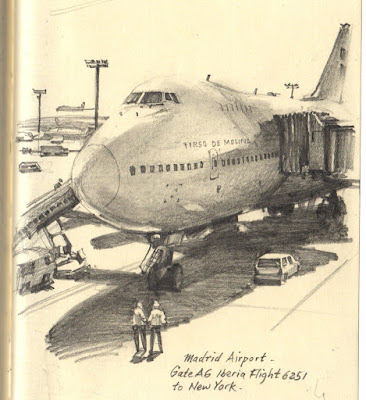



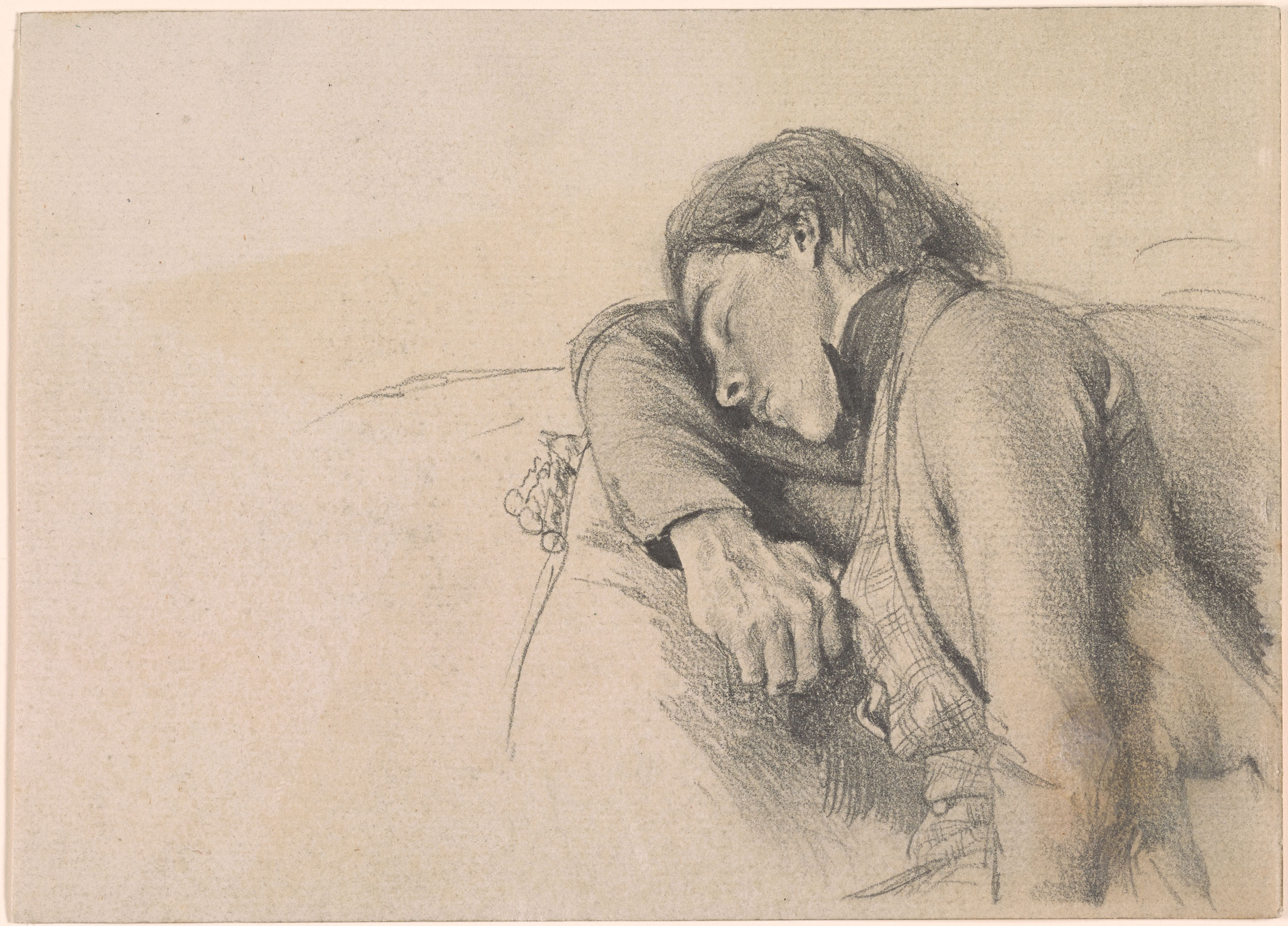



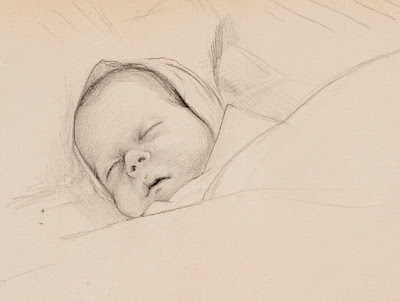








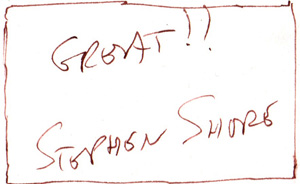

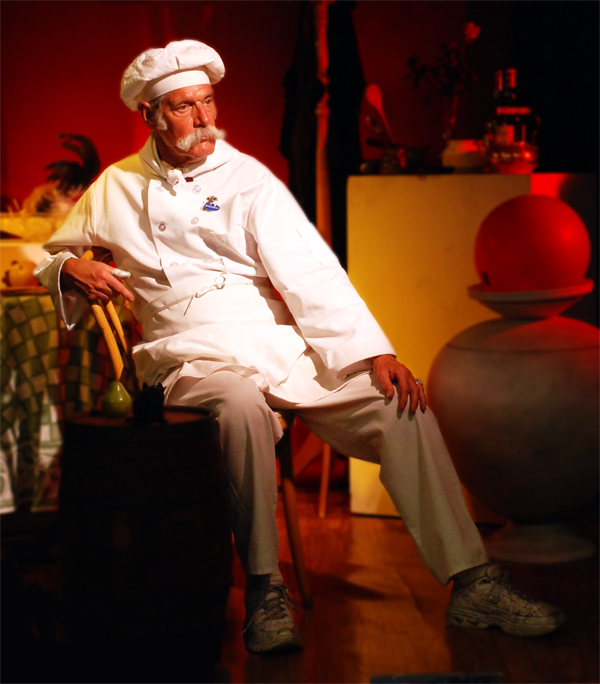



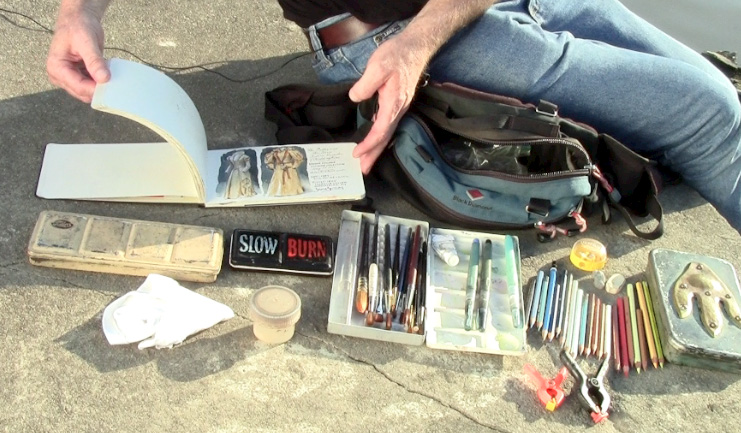











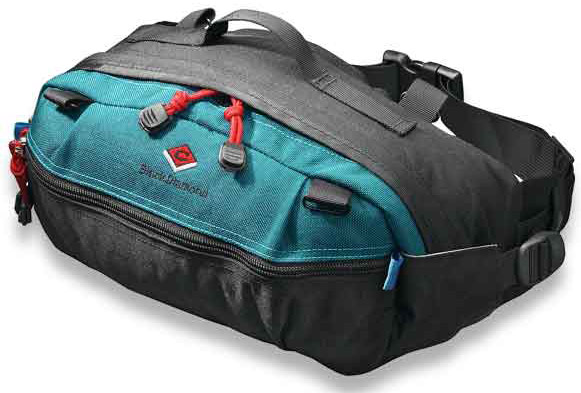



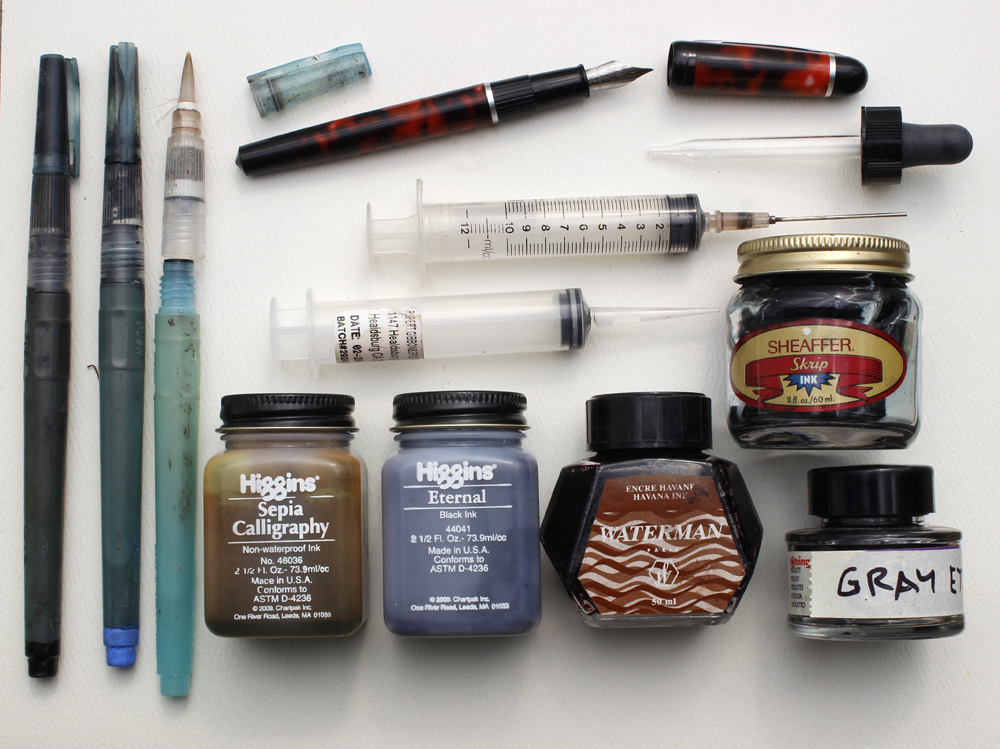









I really love how you simplify your shapes, Mr Gurney!
I hope this means we can expect sketches of lambs in about 15 days.
And I, too, learn from how you simplify shapes. My love of detail too often leads me astray...
This comment has been removed by the author.
I'm impressed by the straight lines. Mine are always wobbly, even more when my sketchbook doesn't lie on the table, but in my lap...
oh, and do you make a sketch, then paint in the washes and go over it with pencil again?
Zeitwolf, the lines are freehanded, and for the perspective, I laid down some light perspective guidelines at the outset to establish the slopes of the shelves and the stove. And yes, in this case I used regular graphite pencil and did the pencil work first and added the washes after.
Steve, this is not the main farm we go to but another one about an hour away (where we did the fleece skirting). We hope to get up there to see and sketch the lambs. They are So Cute!
Thanks, Zishen. It's all geometry. I love to sketch in kitchens, and this one was a gracious old historic one that has hosted many warm gatherings of friends and families. That's what I wanted to capture--the smell of the potatoes in the frying pan.
Another great drawing/painting. Are the different values created with repeated layering of the washes or with different concentrations of the value?
Jim, I think I used two washes: one really light one at left and another a bit darker. I watered down one premixed gray for the light tone. As I recall I packed a little plastic analog film cannister with a wash tone--that was before I discovered brush pens.
Hi Jim,
I'm just curious of your process. You are using regular graphite, correct? Not water soluble graphite? So you are putting your washes in with those brush pens? Do you actually use ink or just water? Would you mind explaining a bit further? If you sold a book or DVD on your sketching methods I would be the first in line.
Thanks, Melissa. This one was used a couple of regular graphite pencils and some premixed diluted watercolor in a little canister applied with a watercolor brush. This was how I sometimes worked before I started using the watercolor pencils and brush pens. It would be fun to do some videos. I want to work on releasing some videos, but have to finish a couple of other projects first.
I think I can almost smell the onions w dem 'taters, and if I'm not mistakin'... I swar Ah kin smell bacon!-RQ
truyen sex